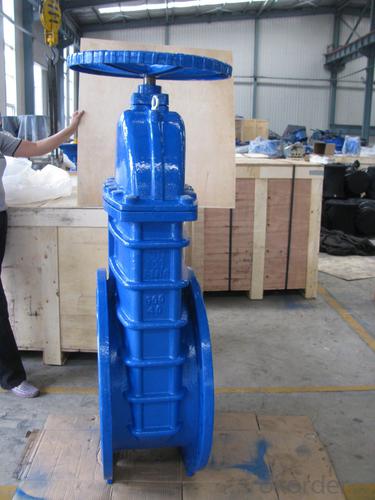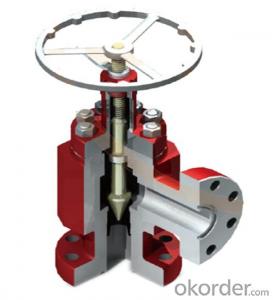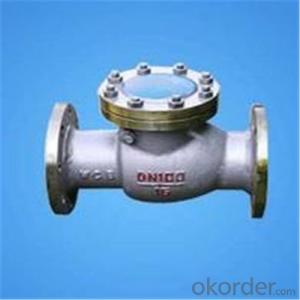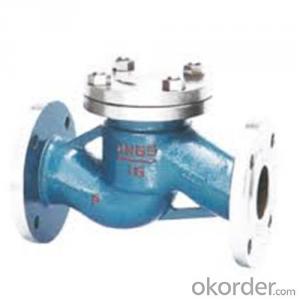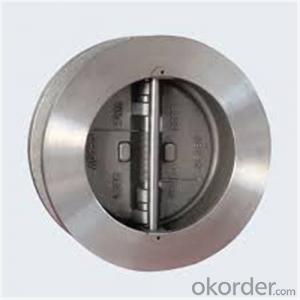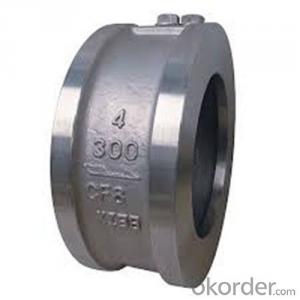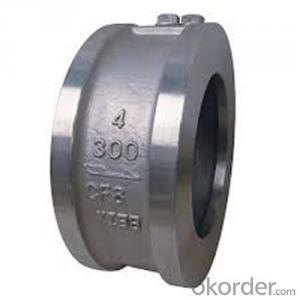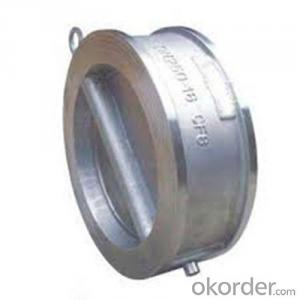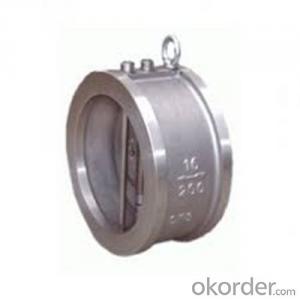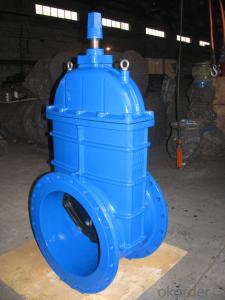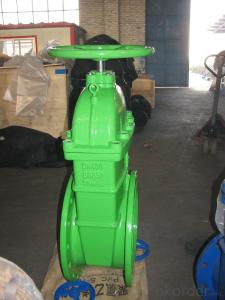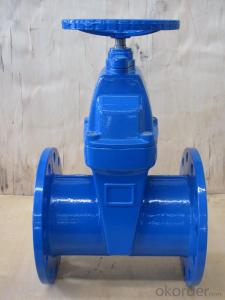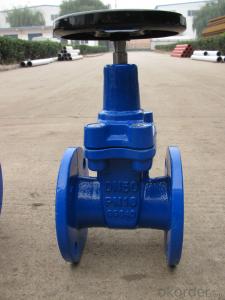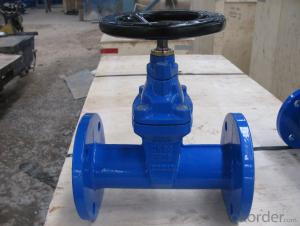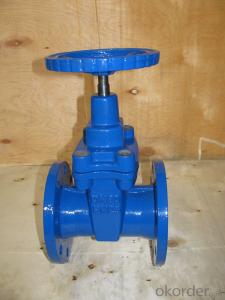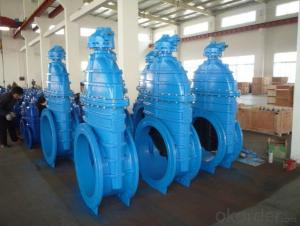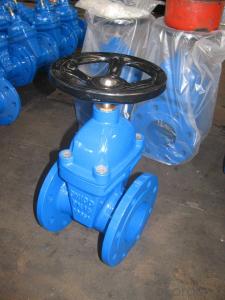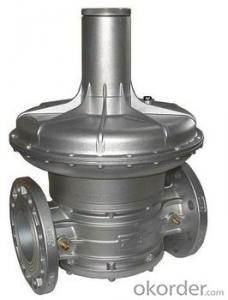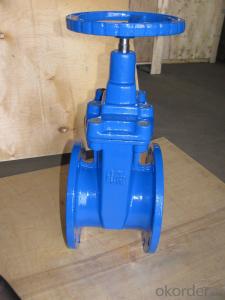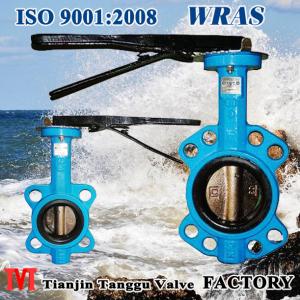Non-rising Stem Resilient Seated Gate ValveGGG50
- Loading Port:
- China Main Port
- Payment Terms:
- TT OR LC
- Min Order Qty:
- -
- Supply Capability:
- -
OKorder Service Pledge
OKorder Financial Service
You Might Also Like
Type: | Non-Rising Stem |
Material: | Body: Cast Iron / Ductile Iron Wedge: Cast Iron / Ductile Iron Encapsulated with EPDM Seat: EPDM / NBR Shaft: SS410 Stem Nut: Brass O-ring: EPDM, NBR Wedge Nut: Brass / Bronze Hand Wheel: Ductile Iron
|
Operator: | Hand Wheel / Bevel Gearing / Square head / Electric actuator |
Face to Face: |
BS5163: 1986, DIN 3202 F4-F5, JIS B2002, ANSI B16.10
|
Flange: | BS4504, DIN 2532, JIS B2212, ANSI B16.10/ANSI B16.50
|
Working Pressure: | 16 Bar(200 PSI) |
Design and Manufacturer Standard : | BS5163, DIN 3352, JIS B2043 |
Test Standard: | API 598 BS6755 DIN 3230 JIS B2003 |
Application: | Water works, Sewage, Public facilties, Building industry, Petroleum, Chemical, Steel, Metallurgy, Paper Making Industry, Foods, Beverage, HVAC |
| | | | ||||||||
| | | | ||||||||
| | | | ||||||||
| | | | ||||||||
| | | | ||||||||
| | | | ||||||||
| | | | ||||||||
| | | | ||||||||
- Q: So just yesterday i bought a second-hand ytr 2320e. After i bought it, i washed it and tryed playing it, but when i press the first valve, there is this small metal scraping metal sound kinda like if you scratch a metal bowl with a fork. I think it has something to do with the spring but im not sure.also, i was wondering if the trumpet valves are supposed to be very easy to press, or if they take a tiny bit of push.
- No, there shouldn't be any scraping sounds. Yikes! It may be simply that the spring guide is misaligned. I'd pull the valve and try to make sure it locks-in when you replace it. On Yamaha's, the valve guide locks in with the valve facing forward (or backward - but you won't be able to blow through it with the valve down). So pull it. Look to see if there's a number engraved on the top section of the valve, and if so... it faces the player. Once you slide it in, turn it side to side slightly. If it won't turn, the valve guide is in place. If it turns a little, you should eventually hear the valve guide snap into the groove and you won't be able to turn it. If the scraping sound continues, the spring may be bent and need to be replaced (easy do-it-yourself kits available on-line). As to the sound, my guess is that this is just a matter of adjusting to a MUCH smaller mouthpiece than you're used to using. Everyone sounds awful when they start. That said... You should also check to see that the spit-valve corks are there and sealing the tuning slide and third valve slide completely. They'll fall off sometimes, which creates a leak and thus an annoying buzz in the sound. It's a good student model trumpet, so congrats on the purchase, and enjoy!
- Q: Hi, I just got my 20 gallon freshwater aquarium yesterday and set it up today with the filter,water, pump,etc... I bought an AquaCulture 20-60 gallon double outlet air pump and didnt realize it had two valves. I only need to use one though ...what should I do??p.s. The bubbler thing that lets the bubbles out is a rectangle and its long but it isnt working in the middle of it...? would that be because of the double valve?p.p.s. the pump came with two check valves.Thanks, Sarah
- You only need to use the one valve, each valve will do 10-30 gallons so you'll be fine. As to the bubbler problem (sounds like a bubble brick to me, so that's what I'll call it), it's most likely uneven. If the brick isn't level it won't let out as much air in the right places. If leveling it doesn't work try adjust how much air goes into it, but the double valve won't be the problem for this. It came with two check valves for the two outlets, you only need to use one.
- Q: So i finaly got my check valve and my airstone. The airstone is actually a flat round airstone and is 5 inches in diameter to be in my 10gallon. Is it to big? though i have a tetra whisper air pump for 10-30g.And how do i place the check valve? Do i put it closer to the tank or closer to the pump? (just to make sure since i heard so many different ways people put it). Or does it even matter?And lastly, do i put the OUT side of the check valve facing towards the tank or the pump?Thanks! after this im ready to install it!
- The airstone is not too big, unless it causes the water to bubble right out of the tank. Then you will need a valve to divert the excess air to an unused air line. If the airline is already cut, just put the check valve wherever the airline ends. If it's not cut you can put it anywhere. The arrow on the check valve should point toward the aquarium. If it says IN and OUT, then the OUT is on the aquarium side. If you want to test it to be sure, blow in one end of the valve. You can't blow air into the side that connects to the aquarium. Be sure there is a drip loop in the air pump electrical cord. If water were to somehow get in the air pump or drip on it, water might follow down the outside of the electrical cord and go into the the wall outlet. To make sure that doesn't happen be sure the cord is looped down lower than the outlet and then loops back up before it's plugged in. Get a second airstone any time in the next few weeks. About once a month, trade airstones, putting the recently used one into a jar with white vinegar. A week or so of soaking will unclog the airstone so that it can be used again several times before needing to be discarded. If you do have excess air, I find that running a piece of airline tubing to a spot away from sight and putting a short piece of pipe cleaner in the far end will muffle the hissing sound of the excess air.
- Q: ok im buying a kx 125 from 96 and he said the only problem with the bike is that it has a small oil leak around the power valve too me it sounds like a gasket. but i want someone elses opinion on what else it could be.
- The kx125 actually has 3 valves in the exhaust, a main, a left-hand one and a right-hand one. Each is fitted with o-rings which require disassembly in order to be reached. This would also be a good time to clean the power valves since they tend to become encrusted with carbon deposits which interfere with their normal operation.
- Q: what's the function of a car valve???????????
- It is the stopper for the combustion chamber, the intake one lets stuff in and the exhaust one lets stuff out.
- Q: she 13 and shes always sleeping what is a leaky valve there not telling me enough for me to understand and im a nurse tech im scared for her
- I've had this very same problem 4 yrs. ago, which was actually found 20 yrs ago. If the back flow of blood in the mitral valve is excessive and the heart starts to enlarge, then the only thing that can be done is a valve replacement, which i did and live a very normal life now. Watch for fatigue, dizziness and shortness of breath. If these things occur frequently, make an appointment with her cardiologist immediately.
- Q: My boyfriend is getting mitral valve replacement surgery soon, he is getting a mechanical valve put in.Has anyone had this surgery done? What are the risks. Anything else need to know about this surgery that is important. Im just worried about the surgery wanting to know as much as I can to be prepared. thank you
- Haven't had it done before but: It's a pretty involved procedure. Patient is put under general anesthesia and is usually on the cardiopulmonary bypass machine (heart-lung machine) since you can't really replace a heart valve if the heart is beating. mortality for full valve replacement according to wiki is 6-8 percent, prob less than 5% for young healthy patients. Recently, many people have been doing the procedure laparoscopically. Patients are put into the surgical ICU for typically 1-2 days after the surgery. You can be discharged about a week after. Obviously there's risks, this is a very involved and definitely not a simple procedure. However, the cardiothoracic surgeons do these procedures every day for their entire lives-they're very skilled and qualified. good luck!
- Q: why is a biological valve replacement weak? in the way it does not last much longer that ten years?why do blood clots form with a mechanical valve replacement?what kind of bleeding problem can the anticoagulant medication cause?if you know the answer to any of these questions (doesnt hav to be all of them) plz answer!! thank you :p
- why is a biological valve replacement weak? in the way it does not last much longer that ten years? --- Its not weak its just that it can fail like the original valve did. Most Doctors prefer to use a mechanical valve(such as titanium) because there is a lot less changes that it will fail and the surgery will have to be repeated. The St. Jude valve is one that is comonly used by doctors(thats the one I have in my heart) Mechanical valves make a ticking sound(kind of like a watch) as your heart pumps blood, this can accually be heard when your next to a person with one in a quiet place(I've freaked some pople out when they heard mine). why do blood clots form with a mechanical valve replacement? --- Blood can clot around anything that is foreign in the body, its part of the human body's natural defenses. what kind of bleeding problem can the anticoagulant medication cause? --- anticoagulants(or blood thinners) do not really cause bleeding problems as long as you have your INR monitored and controlled. those people on anticoagulants(such as Comadin) may bleed a little longer then someone not on them. a person on anticoagulants may bruise easier then someone not on them and the bruise may last a little longer. They bleed a little more but its usually not anything to worry about. A person on blood thiners may also feel colder more often due to the thin blood. Diet can also affect anticoagulents, foods such as leafy greens, alcohol, all affect these medications. Leafy Greens are high in vitaman K wich thinkens the blood. Alcohol thins your blood.
- Q: I own a 1982 Pontiac Firebird base model which has recently started leaking oil from its Proportioning Valve. I have looked all over the internet for a replacement, and it turns out GM has discontinued the part. Now im faced with difficult and risky task of attempting to fix it, or turn it over to a repair shop as a last resort. The valve seems to leak out of a small circle with a hole the size of a needle inside which was covered by a rubber gasket. I have no clue what this does, and how to repair it.
- First up is that the valve is not leaking oil, it is leaking brake fluid. That is bad. The proportioning valve controls the brake pressure to the rear brakes. Most of the braking is done with the front brakes and without the valve you could lock up the rear brakes on medium to hard stops and the rear end could loose traction, that would be a bad thing on a sharp turn. With that said please replace the valve I have never seen a repair kit for them. Have you looked at to GM for the part? They may also have knowledge on a conversion of the master cylinder with the valve built in.
Send your message to us
Non-rising Stem Resilient Seated Gate ValveGGG50
- Loading Port:
- China Main Port
- Payment Terms:
- TT OR LC
- Min Order Qty:
- -
- Supply Capability:
- -
OKorder Service Pledge
OKorder Financial Service
Similar products
Hot products
Hot Searches
Related keywords


